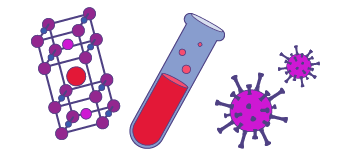In dielectric measurements, multiferroics combine electric and magnetic ordering in the same material.
The speed of the pulse actually increases signal to noise compared to measurements in superconducting magnets. Magnetic fields up 100 T are available. Samples are measured in a helium environment down to 0.5 K. Dielectric constant can also be measured in dc magnetic fields to 20 T and in pulsed fields up to 60 T in the mid or long-pulse magnets using a capacitance at frequencies up to 50 kHz.
Multiferroics combine electric and magnetic ordering in the same material. When these two properties are coupled, then a magnetic field can control the electric polarization, and an electric field can control the magnetization. This can lead to new applications such as ultra-sensitive solid state magnetic sensors, computer memory that combines the best properties of ferroelectric storage and magnetic read/write, solid-state microwave and high-power devices, energy harvesting, and other novel and smart circuit devices.

Explore our magnet schedule to see what exciting research is happening on our stellar fleet of instruments right now.
Jae Wook Kim, et al, Multiferroicity with coexisting isotropic and anisotropic spins in Ca3Co2-xMnxO6, Phys. Rev. B Rapid-Comm.89 (2014) Read online.
E.D. Mun, et al, Magnetic field induced transition in vanadium spinels, Phys. Rev. Letters 112 (2014) Read online.
V.S. Zapf, et al, Magnetically-induced electric polarization in an organo-metallic magnet, Phys. Rev. B 82 (2010) Read online.
Last modified on 01 August 2023